The post Photography Aspect Ratio: What Is It and Why Does It Matter? appeared first on Digital Photography School. It was authored by Andrew S. Gibson.

What are aspect ratios in photography? How does an aspect ratio affect your images? And how can you change the aspect ratio once you’ve taken a photo?
In this article, I’m going to give you a quick introduction to photography aspect ratios – so that, by the time you’ve finished, you’ll understand what they are and how you can use them to improve your own images.
Let’s get started.

What is a photography aspect ratio?
An aspect ratio is the dimensions of an image expressed in a ratio form. You determine the aspect ratio by comparing an image’s width and height, then writing it as a width:height ratio (such as 3:2 or 4:5).
The aspect ratio of your images is initially determined by the dimensions of your camera’s sensor. Because sensor dimensions are fixed, it’s easy to take the aspect ratio of your images for granted.
But it is important to think about the aspect ratio when taking photos. Your camera aspect ratio has compositional implications – and I highly recommend you consider this when out with your camera.
Also, a quick note: While your camera aspect ratio is technically fixed, many newer digital cameras allow you to change the aspect ratio in the camera’s menu. Plus, you have the option of adjusting an image’s aspect ratio in post-processing, so it’s more flexible than you might think!
Why does aspect ratio matter?
Different aspect ratios will produce different types of compositions.
For instance, a square, 1:1 aspect ratio tends to produce very balanced, often confined images.
A 4:5 or a 3:2 aspect ratio offers a bit more space within the frame.
And a 16:9 aspect ratio gives a lot of room for expansion along the image edges.
Of course, the effect of the aspect ratio depends somewhat on the type of scene you’re photographing, and certain scenes naturally lend themselves to certain aspect ratios. That’s why it’s essential to think carefully about the aspect ratio before pressing the shutter button; different aspect ratio choices can dramatically affect the composition.
Common camera aspect ratios
Virtually every camera sensor offers one of two aspect ratios:
3:2 aspect ratio
A 3:2 aspect ratio is used by 35mm crop-sensor and full-frame DSLRs, some Leica medium format cameras, most mirrorless cameras, high-end compact cameras, and most 35mm film cameras. This aspect ratio has been with us ever since Leica made the first 35mm film cameras in the early 20th century.

Now, a full-frame 35mm sensor measures 36 mm x 24 mm. You can express this figure as a ratio: 36:24. Mathematicians always like to simplify ratios so the relationship between the two numbers is easy to visualize, and in this case, you can divide both dimensions by twelve.
That gives you 3:2.
As you’re likely aware, crop-sensor cameras have smaller sensors, measuring approximately 22.5 mm x 15 mm (though the exact measurements vary depending on the brand and model). Despite the different sensor sizes, the ratio between the width and the height remains the same, conforming to a 3:2 aspect ratio.
4:3 aspect ratio
The 4:3 aspect ratio is used by Micro Four Thirds cameras, many compact cameras, some medium format digital cameras, as well as medium format film cameras using the 6 cm x 4.5 cm format.

3:2 vs 4:3 aspect ratio
Now let’s compare the two common camera aspect ratios. In the diagram below, you can see the 4:2 aspect ratio (left), plus the additional space included by a 3:2 sensor:

Clearly, the 3:2 aspect ratio used by most DSLRs and mirrorless cameras is slightly longer than the 4:3 aspect ratio used by Micro Four Thirds cameras. The difference may not seem like much, but it has a major effect on the composition. Take a look at the following images to see why.
Here’s the original shot, taken with a 3:2 aspect ratio:

And here’s the same image, but cropped to the 4:3 aspect ratio, as if it had been taken with a Micro Four Thirds camera:

Do you see the difference? It’s subtle, but it’s there. The 35mm frame is longer.
And that can be challenging when it comes to composition because you have to find a way to effectively fill that length.
Landscape photography, in particular, often benefits from a compressed frame, and that’s one of the reasons for the popularity of 7:6 medium format cameras and 5:4 view cameras among landscape film photographers.
Here’s what the same landscape would look like cropped to these formats:


For me, the 7:6 aspect ratio is too short, but 5:4 is a very pleasing aspect ratio to work in.
Aspect ratio examples
Now, after seeing the photos above, you might be thinking that the difference between aspect ratios is not a big deal. And often, when you are shooting in the landscape format (i.e., with the camera positioned so that the frame is horizontal), the difference is minimal. It’s not so difficult to work with any of the aspect ratios I’ve presented above.
But if you switch to the portrait format (i.e., with a vertical frame), it’s a different story. A 3:2 frame suddenly becomes a lot harder to fill effectively, and the composition often benefits from cropping to a shorter rectangle. Here are some examples to show you what I mean:



The difficulty I had with the landscape above is that there was too much empty sky in the original image. I solved the problem by cropping off the top, and the final 4:5 aspect ratio seems to work nicely.
Of course, not all images will benefit from this type of crop. But if you find yourself struggling to fill the frame, especially if you have a 35mm camera with a 3:2 frame, you may want to try a different aspect ratio.
By the way, here is the first image cropped to a couple more common aspect ratios.
The panoramic format (16:9):

And the square format (1:1):

Adjusting the aspect ratio in-camera
As I mentioned above, many digital cameras let you adjust the aspect ratio in the camera menu. And if you have a camera with an electronic viewfinder, you may see the cropped image in the viewfinder itself.
If your camera doesn’t have an electronic viewfinder, you’ll need to use Live View to take advantage of the aspect ratio function. The camera will display the cropped image on the rear LCD screen.
But there’s a major caveat:
If you use a non-native aspect ratio while shooting in JPEG, your camera will crop the image when you take the photo, and there’s no way to resurrect the edges of the frame. So if you later decide that you want a 3:2 aspect ratio instead of a 1:1 aspect ratio, you’re out of luck.
However, if you use a non-native aspect ratio while shooting in RAW, the camera will save the entire image in the original aspect ratio, and you can change your mind about the crop in post-processing.
Cropping in post-processing
It’s often easier to crop in post-processing than in the field. Plus, if your camera doesn’t have an aspect ratio function, cropping during editing is the only way to adjust the aspect ratio.
In pretty much every dedicated editing program, cropping is easy.
For instance, in Lightroom, just click the Crop icon, then select an aspect ratio from the Aspect menu:

Photography aspect ratio: conclusion
As you now know, aspect ratio is a big deal. It’s always a good idea to think about aspect ratios while shooting – and then, if necessary, adjust the aspect ratio in post-processing.
Now over to you:
What’s your favorite aspect ratio? And do you think about aspect ratio while taking photos? Share your thoughts in the comments below!
There is no one best aspect ratio – it all depends on the look you’re after! Some scenes benefit from square (1:1) aspect ratios, whereas others look great with a 4:3 or a 5:4 aspect ratio. I’d recommend playing around in a program like Adobe Lightroom.
That depends on the photo. As discussed in the article, landscape shooters tend to favor squarer aspect ratios such as 4:5, though if you’re a panorama photographer, a 16:9 frame (or wider!) might be preferable. Portrait photographers tend to avoid narrow aspect ratios, but there are times when a portrait looks good as a 9:16 composition.
8×10 photos have a 4:5 aspect ratio.
The post Photography Aspect Ratio: What Is It and Why Does It Matter? appeared first on Digital Photography School. It was authored by Andrew S. Gibson.


















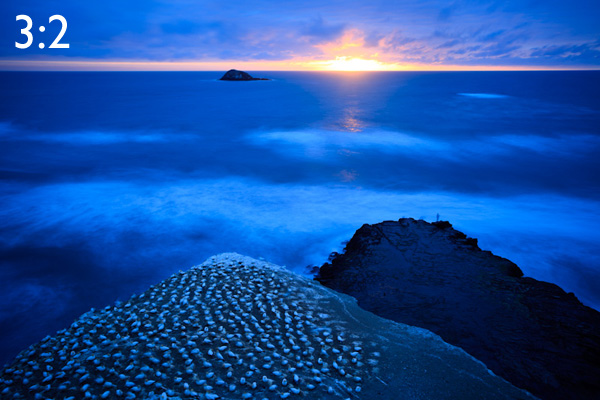

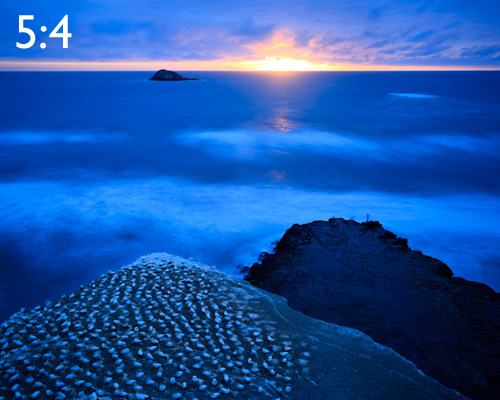





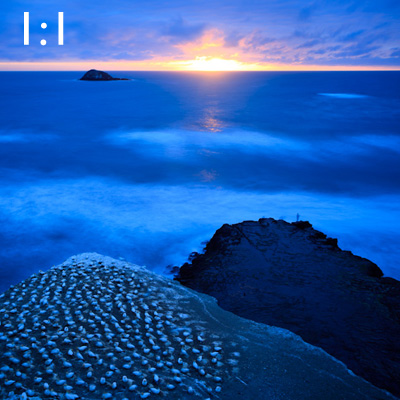
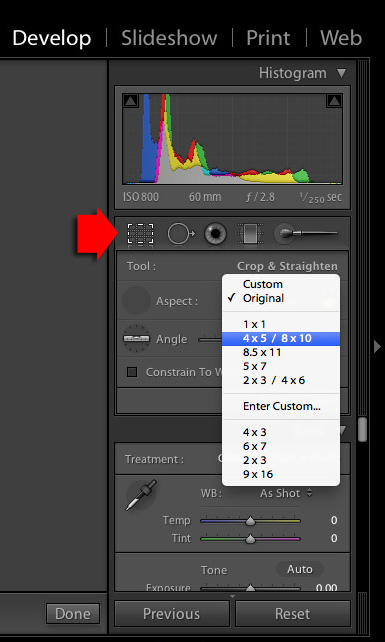
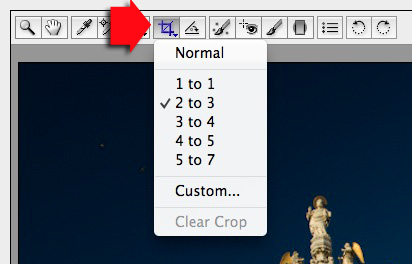

You must be logged in to post a comment.